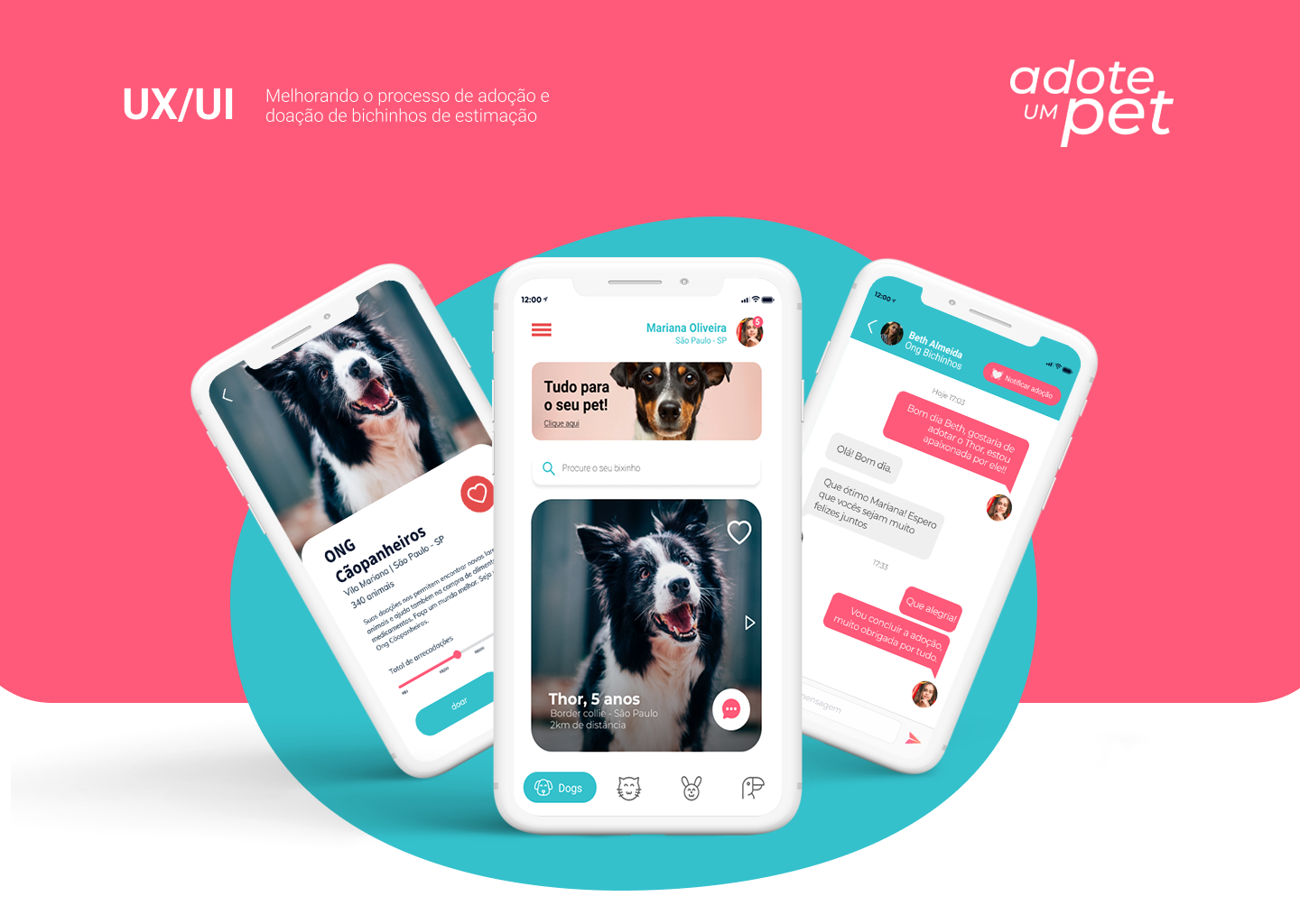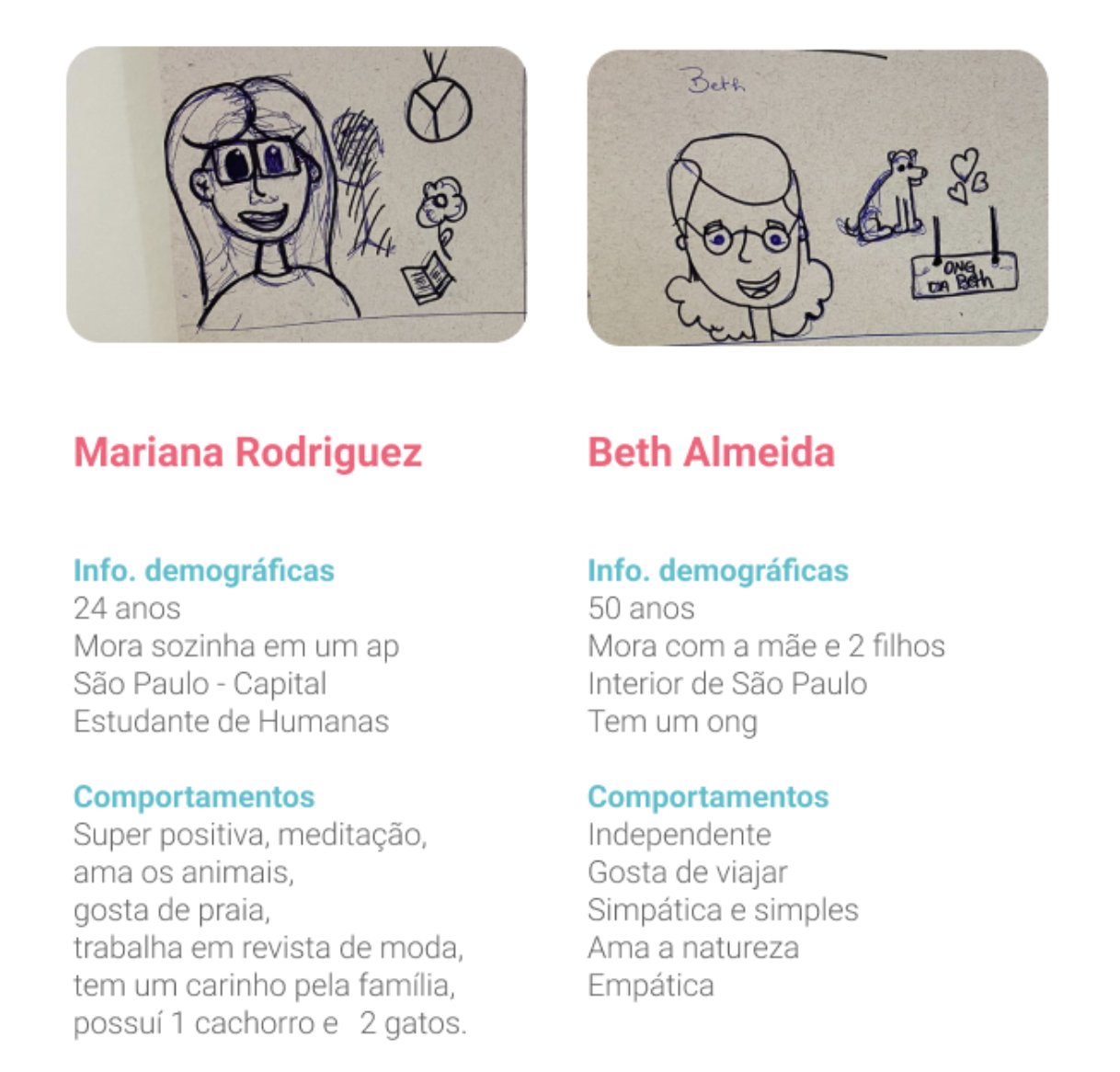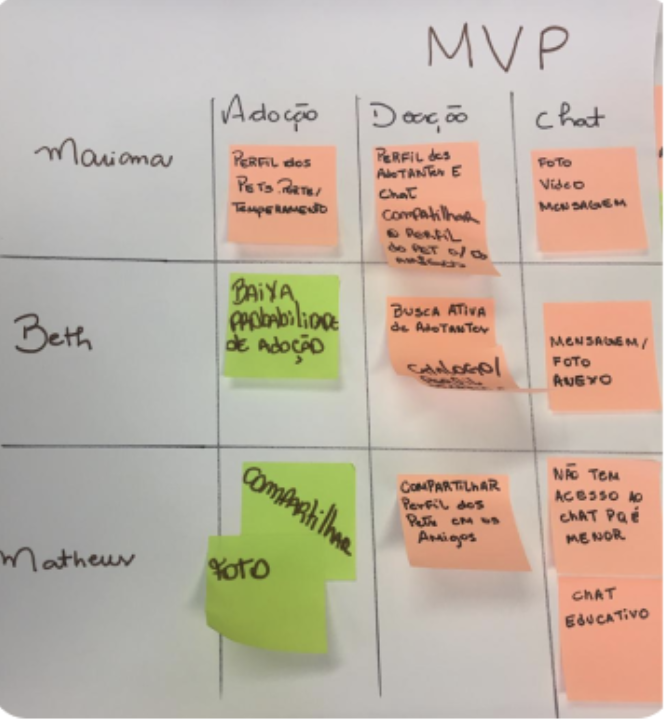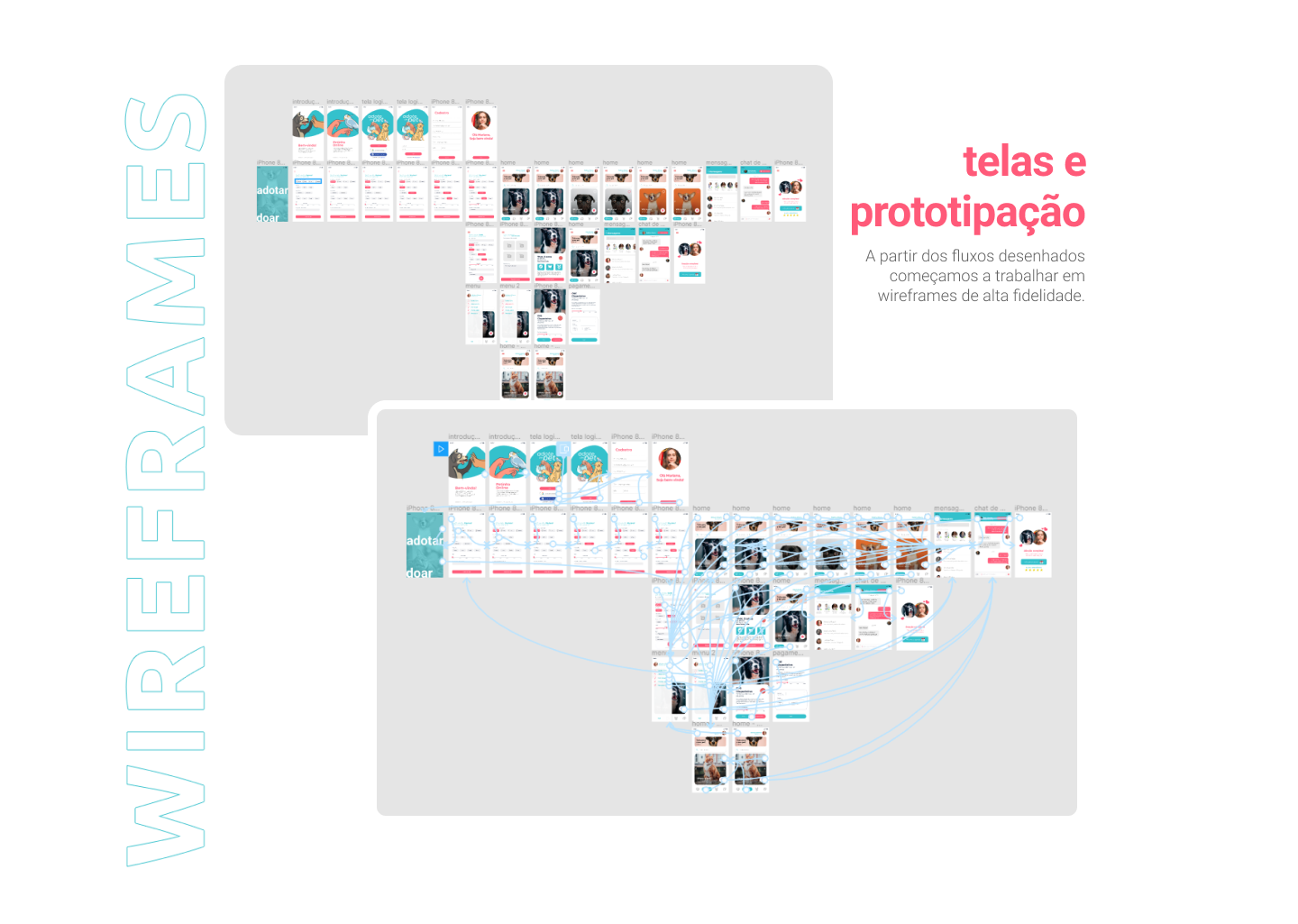Project Type: Academic Case Study
Platform: Mobile App (iOS & Android)
Tools: Figma, Illustrator, Photoshop
Team: Jéssica Veloso, Eva Carolina, Marcelo Pampanini
Institution: Caelum
Year: 2020
 The Challenge
The Challenge
To simplify pet adoption and donation processes, ensuring trust between parties, and to provide services for animal welfare through partnerships, lost pet communication, and donation campaigns.
Design Approach
We chose to use the Double Diamond methodology because it offers a clear and user-centered approach to solving complex problems. In the context of creating a pet adoption app, it was essential to deeply understand the needs of both potential adopters and the shelters or rescuers.

Discover process
In the Discover phase, our goal was to better understand the business we were about to build. To do this, we used tools like the “Do’s and Don’ts” and the 360º View Canvas.
These frameworks helped us clarify the business model, identify opportunities, and align the team on what the app should and should not do. By mapping out key aspects such as the value proposition, user expectations, limitations, and potential risks, we created a solid foundation before moving forward with ideation.
This strategic deep dive allowed us to ensure that the app would not only meet user needs but also align with the business goals from the very beginning.
Protopersonas & Journeys
Still in the Discover phase, we also mapped out proto-personas to represent our potential users. We started with desk research to gather initial information about user behavior and market trends.
Then, we conducted interviews to dive deeper into users’ current pain points, uncover valuable insights, and validate some of the initial hypotheses we had in mind. This process helped us build empathy with our audience and ensured that our future solutions would address real, confirmed needs.


Through this process, we were able to align the team on real user needs and start outlining a clear path toward defining our Minimum Viable Product (MVP).

Based on the insights gathered from the interviews, we were able to clearly define a core problem to focus on. This marked a key turning point in the project, as it gave us the clarity needed to start designing effective solutions that directly addressed the users’ real needs.
Ideation & Co-criation
After defining the problem, we moved into the Develop phase and began the co-creation of possible solutions. To encourage creativity and generate a variety of ideas quickly, we used the Crazy 8 technique alongside other team members.

This collaborative workshop allowed everyone to explore different approaches to solving the problem, fostering innovation and aligning the group around user-centered solutions.
Pet Catalog with filters
Detailed Pet Profiles
Guided Adoption Process
Business Partnerships
Lost Pet Communication
Donation Campaign Features
UI Guidelines
Soft Color Palette
Friendly Typography
Intuitive Iconography
Accessibility Considerations
Outcomes & Learnings
Positive Validation
Increased Engagement
Ideas for Future Iterations (e.g., Chat, Geolocation)
Prototype Access

Conclusion
This case study demonstrates how UX/UI design can create real-world impact by connecting people and pets. The solution is human-centered, efficient, and emotionally engaging.
Full project on Behance: View Project